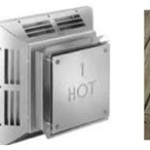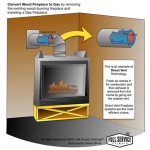Ledgestone Veneer Fireplace Surround: A Comprehensive Guide
A fireplace serves as a focal point in many living spaces, providing not only warmth but also aesthetic appeal. The surround, the area surrounding the firebox, significantly contributes to the overall design. Ledgestone veneer provides a versatile and visually striking option for fireplace surrounds, offering a natural stone look without the weight and expense of solid stone. This article explores the benefits, installation considerations, design options, and maintenance requirements of ledgestone veneer for fireplace surrounds.
Understanding Ledgestone Veneer
Ledgestone veneer is a thin layer of natural or manufactured stone adhered to a backing, typically concrete or a lightweight composite material. It is designed to replicate the appearance of stacked, natural stone ledges. Unlike full-thickness stone, ledgestone veneer is significantly lighter and easier to install, making it a practical choice for both new construction and renovation projects. Its relatively thin profile also allows for application in areas where space is limited.
The material used in ledgestone veneer can vary. Natural ledgestone veneer is comprised of real stone, quarried and cut into thin pieces. Common stone types include slate, quartzite, and sandstone. Manufactured ledgestone veneer, on the other hand, is made from a concrete mix that is molded and colored to resemble natural stone. The manufacturing process allows for greater consistency in color and texture, and often results in a more affordable product. Both natural and manufactured options offer distinct advantages depending on the desired aesthetic and budget.
The application of ledgestone veneer on a fireplace surround brings depth, texture, and a sense of rustic elegance to a room. The stacked stone appearance creates a visually engaging surface, adding character and warmth to the space. The natural variations in color and texture found in both natural and manufactured ledgestone veneer contribute to a unique and personalized look.
Benefits of Using Ledgestone Veneer for Fireplace Surrounds
Employing ledgestone veneer for fireplace surrounds presents multiple advantages compared to other materials. These benefits range from aesthetic appeal and ease of installation to cost-effectiveness and design versatility.
Aesthetic Appeal: Ledgestone veneer offers a natural, textured look that is highly desirable for fireplace surrounds. The stacked stone appearance provides a sense of depth and visual interest, enhancing the overall ambiance of the room. The material's organic quality contributes to a warm and inviting atmosphere, making it a popular choice for both traditional and contemporary designs. The inherent variations in color and texture within the ledgestone create a one-of-a-kind look, ensuring that each fireplace surround is unique.
Ease of Installation: One of the most significant advantages of ledgestone veneer is its relatively simple installation process. Compared to full-thickness stone, ledgestone veneer is much lighter and easier to handle. It can be installed by experienced DIYers or professional contractors, reducing labor costs and project completion time. The thin profile of the veneer also allows for installation in areas where space is limited, making it suitable for a variety of fireplace designs. The interlocking nature of many ledgestone veneer products further simplifies the installation process, ensuring a seamless and professional finish.
Cost-Effectiveness: Ledgestone veneer provides a cost-effective alternative to using full-thickness stone. The materials themselves are often less expensive, and the reduced labor costs associated with installation contribute to overall savings. The lightweight nature of the veneer also reduces structural requirements, potentially lowering construction costs. Furthermore, the durability of ledgestone veneer ensures long-term value, minimizing the need for frequent repairs or replacements. This makes ledgestone veneer a financially sound choice for homeowners looking to enhance their fireplace without exceeding their budget.
Design Versatility: Ledgestone veneer is available in a wide range of colors, textures, and styles, offering considerable design versatility. Whether the desired aesthetic is rustic, contemporary, or transitional, there is a ledgestone veneer product to suit the design vision. The material can be used to create a variety of fireplace surround designs, from simple, minimalist surrounds to elaborate, floor-to-ceiling installations. The flexibility of ledgestone veneer allows for seamless integration with other design elements, such as mantels, hearths, and built-in cabinetry. This makes it a highly adaptable material for achieving a personalized and cohesive look.
Key Considerations for Installing Ledgestone Veneer on a Fireplace Surround
Prior to installing ledgestone veneer on a fireplace surround, several critical factors must be considered to ensure a successful and safe installation. These considerations include surface preparation, material selection, adherence to building codes, and proper ventilation.
Surface Preparation: Proper surface preparation is essential for ensuring the successful adhesion of ledgestone veneer. The substrate, typically concrete or a cement board, must be clean, dry, and structurally sound. Any loose or damaged material should be removed and repaired before proceeding. A scratch coat, a thin layer of mortar, is often applied to the substrate to create a textured surface for better adhesion. The scratch coat should be allowed to cure properly before installing the ledgestone veneer. This preparation step is crucial for preventing future issues such as detachment or cracking.
Material Selection: Choosing the right type of ledgestone veneer is vital for achieving the desired aesthetic and ensuring compatibility with the fireplace. Considerations should include the color, texture, and style of the veneer, as well as its fire resistance and durability. Natural ledgestone veneer offers a unique and authentic look, while manufactured ledgestone veneer provides greater consistency and affordability. It is crucial to select a veneer product that is specifically designed for fireplace surrounds and meets all relevant safety standards. Consulting with a professional can help in making the best selection based on individual needs and preferences.
Adherence to Building Codes: Fireplace installations, including ledgestone veneer surrounds, must comply with local building codes and regulations. These codes typically address issues such as fire safety, ventilation, and clearances from combustible materials. It is essential to obtain the necessary permits and inspections before starting the project. Consulting with a qualified building inspector or contractor can ensure that the installation meets all applicable codes and regulations. Failure to comply with building codes can result in costly repairs or even legal penalties.
Ventilation and Clearances: Proper ventilation and clearances are critical for the safe operation of a fireplace. The ledgestone veneer surround should be designed to allow for adequate airflow around the firebox and chimney. It is also essential to maintain proper clearances from combustible materials, such as wood framing or furniture. These clearances are typically specified by the fireplace manufacturer and local building codes. Insufficient ventilation or inadequate clearances can lead to overheating, fire hazards, or other safety issues. Careful attention to these details is crucial for ensuring the safe and efficient operation of the fireplace.
Design Ideas and Styles for Ledgestone Veneer Fireplace Surrounds
The versatility of ledgestone veneer allows for a wide range of design possibilities for fireplace surrounds. From rustic and traditional to modern and contemporary, ledgestone veneer can be incorporated into various architectural styles. The following outlines several design ideas and styles that can be achieved with ledgestone veneer.
Rustic Charm: For a rustic aesthetic, natural ledgestone veneer in earth tones, such as browns, grays, and tans, is an ideal choice. The irregular shapes and textures of natural stone create a look that is reminiscent of old-world architecture. Paired with a reclaimed wood mantel and exposed brick accents, a ledgestone veneer fireplace surround can evoke a sense of warmth and authenticity. The natural variations in the stone contribute to a unique and characterful design that complements country-style or farmhouse interiors.
Modern Minimalism: Ledgestone veneer can also be used to create a modern and minimalist fireplace surround. By selecting a veneer with a clean, linear design and neutral colors, such as white or gray, a sleek and sophisticated look can be achieved. A frameless fireplace opening and a simple concrete hearth further enhance the minimalist aesthetic. The subtle texture of the ledgestone adds visual interest without overwhelming the overall design, creating a focal point that is both elegant and understated. This style is well-suited for contemporary homes with clean lines and a focus on simplicity.
Transitional Blend: A transitional design blends traditional and contemporary elements, creating a balanced and harmonious look. Ledgestone veneer with a mix of colors and textures can be used to achieve this effect. Combining natural stone with smooth, man-made materials creates a visually appealing contrast. A classic mantel with clean lines and a simple hearth can complement the ledgestone surround. The transitional style offers a flexible approach to fireplace design, allowing for personalization and adaptation to various interior styles.
Floor-to-Ceiling Feature: For a dramatic statement, ledgestone veneer can be extended from the floor to the ceiling, creating a striking focal point in the room. This design is particularly effective in rooms with high ceilings, as it draws the eye upward and adds a sense of grandeur. The vertical expanse of ledgestone veneer creates a strong visual impact, transforming the fireplace into a captivating architectural feature. This style is well-suited for both traditional and contemporary homes, depending on the specific ledgestone veneer selected.
Maintaining a Ledgestone Veneer Fireplace Surround
Proper maintenance is essential for preserving the beauty and longevity of a ledgestone veneer fireplace surround. Regular cleaning and occasional sealing can help prevent damage and ensure that the veneer retains its original appearance. The following outlines key maintenance practices for ledgestone veneer fireplace surrounds.
Regular Cleaning: The ledgestone veneer can be cleaned regularly using a soft brush or vacuum cleaner attachment to remove dust and debris. For more stubborn dirt or stains, a mild soap and water solution can be used. It is important to avoid using harsh chemicals or abrasive cleaners, as these can damage the surface of the veneer. After cleaning, the veneer should be thoroughly rinsed with clean water and allowed to dry completely. Regular cleaning helps prevent the buildup of dirt and grime, keeping the ledgestone veneer looking its best.
Sealing: Sealing the ledgestone veneer can help protect it from moisture, stains, and other environmental factors. A penetrating sealer is typically recommended for natural stone ledgestone veneer, as it allows the stone to breathe while providing a protective barrier. For manufactured ledgestone veneer, a water-based sealer can be used. The sealer should be applied according to the manufacturer's instructions, typically with a brush or roller. Sealing should be repeated every few years, or as needed, to maintain the protection. Sealing helps to prolong the life of the veneer and keep it looking its best.
Repairing Damage: Over time, the ledgestone veneer may become damaged due to impacts or weathering. Small cracks or chips can be repaired using a stone repair kit or epoxy filler. The damaged area should be cleaned and prepared before applying the repair material. The repair material should be colored to match the veneer as closely as possible. For more extensive damage, it may be necessary to replace the affected area of the veneer. Consulting with a professional contractor can help determine the best course of action for repairing damaged ledgestone veneer.
Inspecting for Moisture: Moisture can be a significant threat to ledgestone veneer, especially in areas with high humidity or exposure to the elements. Regularly inspect the veneer for signs of moisture damage, such as staining, discoloration, or efflorescence (a white, powdery deposit). Address any moisture issues promptly to prevent further damage. This may involve improving ventilation, repairing leaks, or applying a water-repellent sealant. Proactive measures to manage moisture can help protect the ledgestone veneer and extend its lifespan.

Broe Ledgestone Residential Fireplace Fond Du Lac Natural Stone

Vintage Gold Tailored Ledgestone Buechel Stone Stacked Fireplaces Veneer Fireplace Surround

Ledge Stone Fireplaces Photos Ideas Houzz

Faux Stone Exterior Southern Ledge Fireplace Hearth Design Remodel

Fireplace Makeover Featuring Ledgestone The Cultured Stoners

Ledge Stone Veneer Interior Fireplaces Contemporary Toronto By Selex Houzz
.jpg?strip=all)
3 Inspirational Ledgestone Veneer Fireplaces

Ledgestone Fireplace S Stacked Stone Fireplaces Designs Remodel

Natural Stone Veneer I Ledgestone Selex

Cinnamon Bark Ledgestone Veneer Interior Stone Fireplace Buechel
Related Posts








